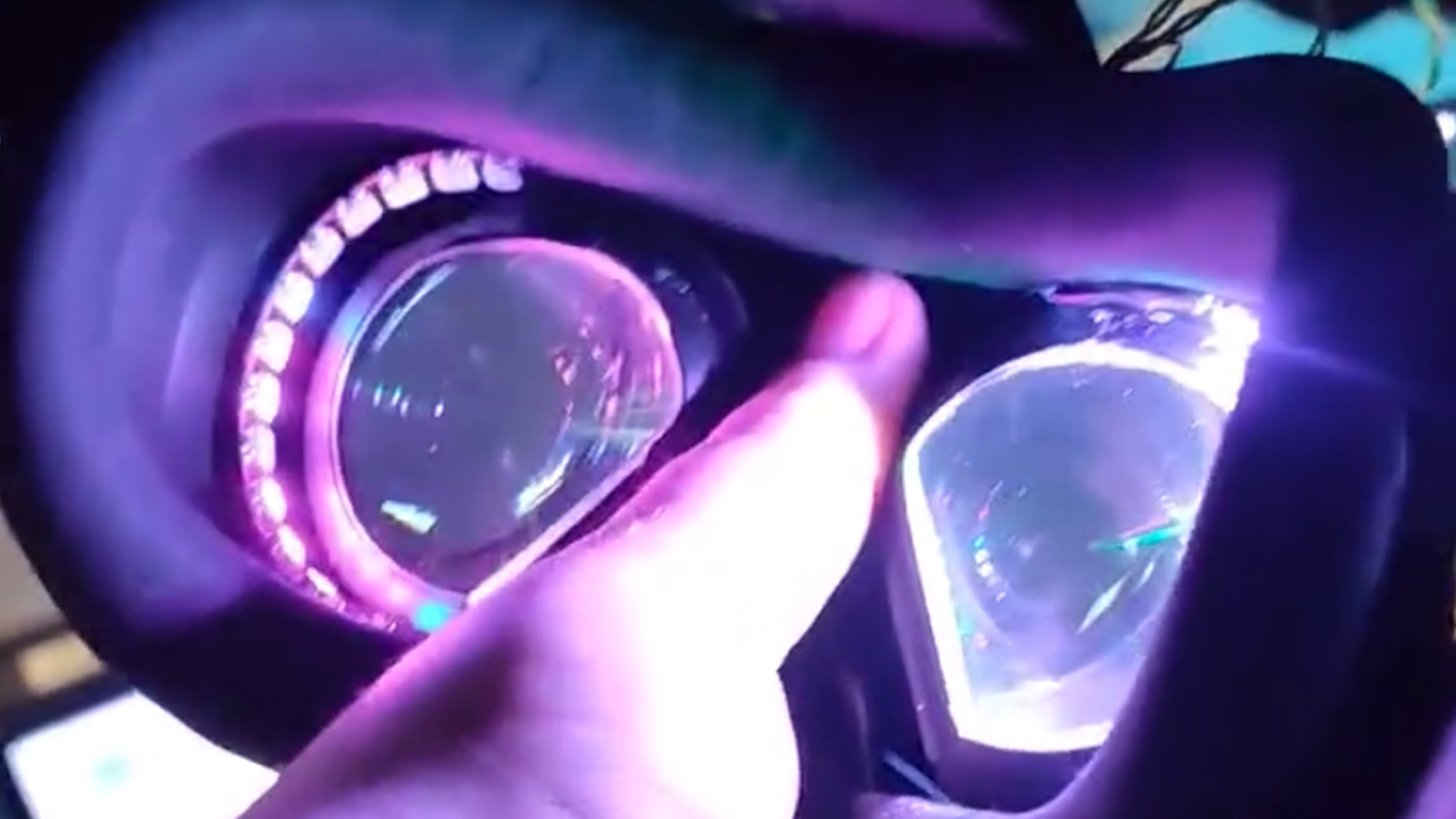
Or tricks you into thinking it's been increased, at least.
VR has become more mainstream than I ever imagined it would, back when I first got my hands on an original Oculus Rift dev kit. I know people who aren’t really into games but who still own a Quest 2 headset for Beat Saber shenanigans. For those who are deep into the VR landscape, you’ve got high-end offerings like the Pimax headsets with expanded fields of view. But even with Pimax’s great trade-in deals, not everyone is ready to slap that kind of money on a VR headset.
For those looking for that wide field-of-view feeling on a budget, one DIY enthusiast might just have you covered. ShodaVR on Twitter (spotted by Mixed-News) has devised an effect that mimics a wider range of vision on their Vive headset. This hack looks like an easy one, and it can be tried out by most people with a VR headset.
All the effect requires is an array of LEDs placed inside the headset. These LEDs are then programmed to mimic the border lights that you’re seeing. It’s the same way ambient lighting works in conjunction with TVs and monitors, and even relatively cheap setups like Govee Dreamlights can make a huge difference. In a room it helps to paint your environment with the light you’d have in the world on your screen and offers a greater sense of immersion. If you’ve experienced a good ambient lighting setup you know how effective this trick can be.
Shoda has posted several videos of their hacked setup working on Twitter, including a blind test from their partner. Even with the current relatively simple setup it seems to be leaving an impression. The next steps are to get some diffusing happening in the headset, as well as 3D printing an insert. Shoda is even gauging interest to see if it’s worth developing the accessory further.
(Image credit: Valve)
Best VR headset: which kit should you choose?
Best graphics card: you need serious GPU power for VR
Best gaming laptop: don’t get tied to your desktop in VR
Given how well this seems to work it’s almost a mystery why headset makers haven’t already implemented this kind of tech. Extra lights in the headset may add to the bulk, but given Shoda was able to power this from the Vive itself, adding relatively little in perceived heft, it’s a curious one. Especially given LEDs are cheap, lightweight, and low power drawers.
It looks like Shoda has put a lot of work into this build, making a nice clean end result which is likely better than what I could ever achieve. The execution is already looking quite professional, but perhaps more will be discovered as the prototyping continues.
My “VR Ambilight” mock up is done, it feels ABSOLUTELY INCREDIBLE, the “Fake FOV” boost is so trippy, I just need to diffuse the little better then it’s time to 3D print a fully enclosed facial interface. @Thrilluwu Orion club pops with this! Making one for the Index now. pic.twitter.com/p4MktC3p0hFebruary 18, 2023
Hopefully this is as easy an implementation as it seems because it sure looks like a cool one. I’d love to shove some LEDs into my Quest headset to get that added dose of immersion while in VR. I tend to run mine through the computer and thus could use screen mirroring software to control the notes. However, as Shoda notes, getting standalone Quest games would be more difficult and might be on the backburner for now.
If it all works out this might be one of the cheapest and easiest ways to upgrade your VR headset. It may even lead way to further advancements. Shoda talks about cool game effects that could be implemented like having it flash red around the outside if you’re being attacked from behind. These would likely need to be set up on the game developer end of things, but if these ambient lighting LEDs take off, who knows.






